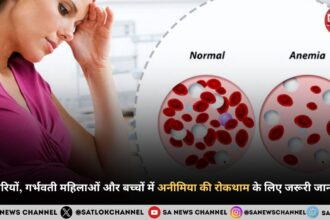Did you ever buy an expensive food product, only to find out it’s a cheap replica? We all have experienced this, haven’t we? This happens in real life and is known as “food adulteration”. What is food adulteration? You’ll get the answer to this intriguing question ahead.
Fake Milk?
Picture a dairy owner selling milk. Creamy, tasty and high-quality milk. They sell it for a good price, too. But when someone experiments, it is observed that the quality milk they bought contained fragments of chalk. Is it still considered good quality?
So this “food adulteration” is the process of adding cheap, low-quality substances to food that make it weigh more, increase shelf life or otherwise reduce the quality or nutrition of the food. For example, even spices contain illegal adulterants these days, such as brick powder, lead salt and other harmful chemicals.
Healthy Fruit Juice..?
Another example is packaged fruit juice. So, how is packaged fruit juice adulterated? Isn’t it supposed to be natural and healthy? Well, it isn’t as healthy as it seems. Usually, fruit juice advertisements show fruits floating around. But how is the actual product so sweet?
Take packaged orange juice, for instance. Packaged orange juice is sweet. Of course, there’s some sugar added to it, you might say. But these manufacturers don’t add regular amounts of sugar into these drinks. Take a look at the package if you have it in your refrigerator! An average serving of packaged fruit juice containing 240 ml (millilitres) of content contains 20-26 g (grams) of added sugar. But sugar isn’t the only adulterant.
There are many more. So these companies use large amounts of unhealthy chemicals to make fruit juice. First, they add water. Because they want to make a profit and reduce their cost, they only use a small amount of the actual fruit juice to make this product. Adding too much water to the juice causes it to lose both its flavour and colour.
To compensate for these losses, they add so-called “nature-identical flavouring substances” to these products. Now, after adding so many chemicals, the colour doesn’t look appealing. The next thing they do is add a large amount of food colouring.
The final product is, well, only a very small amount of fruit juice!
Are You Sure You’re Eating Real Paneer?
Moving on to paneer (cottage cheese). Alright, it is common knowledge that homemade paneer is made by curdling the milk with any food acid, for example, lemon or vinegar. But dairy store owners adulterate paneer so that they get more of it. To do that, they add starch to the paneer. Now they have some “good-looking but not so healthy paneer”.
Also Read: How to Develop Healthy Eating Habits
So, how do we identify if the paneer is real or not? There’s a common way of identifying “fake paneer”. To do this, you must put a few drops of iodine on the paneer. If it turns blue, congratulations, you have some adulterated cottage cheese! But actually, this iodine test isn’t reliable either.
You could do some lab tests, or just buy some paneer from a trusted dairy or simply make it at home.
What to do if you find adulterated food.
The methods of food adulteration mentioned above are not exhaustive, as many other items are also adulterated, including honey, fruits and vegetables (which may be coated with wax), grains (where stones are added), and sugar and salt.
The Prevention of Food Adulteration Act of 1954 protects consumers from unsafe and unhealthy food products.
In conclusion, if someone finds an adulterated food item, they must first gather proof like labels, packaging and then report the issue to the FSSAI (Food Safety and Standards Authority) through FSSAI online portal, FSSAI helpline, or their “Food Safety Connect” app. The real question is, why do people commit food adulteration?
Why Do Producers or Sellers Adulterate Food?
People these days look for easy money without much work. Food adulteration is super profitable. This is because food is a basic necessity, and there will always be a high demand for it. Nature has its own pace in producing food. This leads to shortages, and to make up for these shortages, producers adulterate the food. Our planet doesn’t have enough for everyone. It would be a miracle if there were a place where everything is abundant and freely available.
Satlok: The Eternal Abode Beyond This Universe
There is a place where everything is abundant and freely available. But there’s a catch. It is not in this universe. To reach there, you must worship the Supreme Almighty Kabir Saheb. He will take you to that eternal place called “Satlok”, where we will all live a blissful life. To go there, you must take initiation from Saint Rampal Ji Maharaj.
He is the only truly enlightened saint in this world. To know more, listen to His spiritual discourses on the “Sant Rampal Ji Maharaj” YouTube channel or order a free copy of this wonderful book “Gyan Ganga”
FAQs on food Adulteration
- What is food adulteration?
Answer: Food adulteration is the process of secretly adding unhealthy substances to food.
- What is food adulteration in milk?
Answer: Adding water, chalk powder, or other harmful substances to milk constitutes adulteration.
- How to prevent food adulteration?
Answer: Buy goods from trusted suppliers, or simply make your goods at home.
- Why food adulteration?
Answer: To make the goods weigh more, look good and for the sellers to earn a profit.
- Is food adulteration a crime?
Answer: Yes, any case of food adulteration is considered a crime in India.









